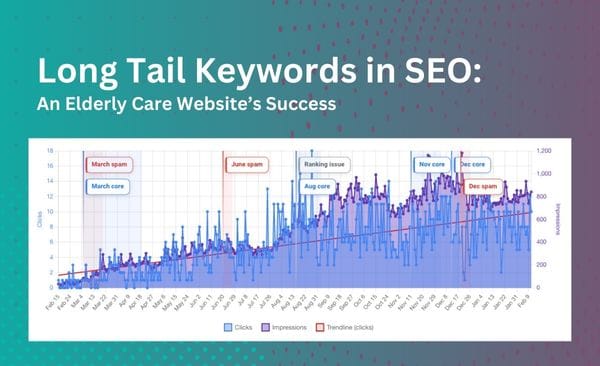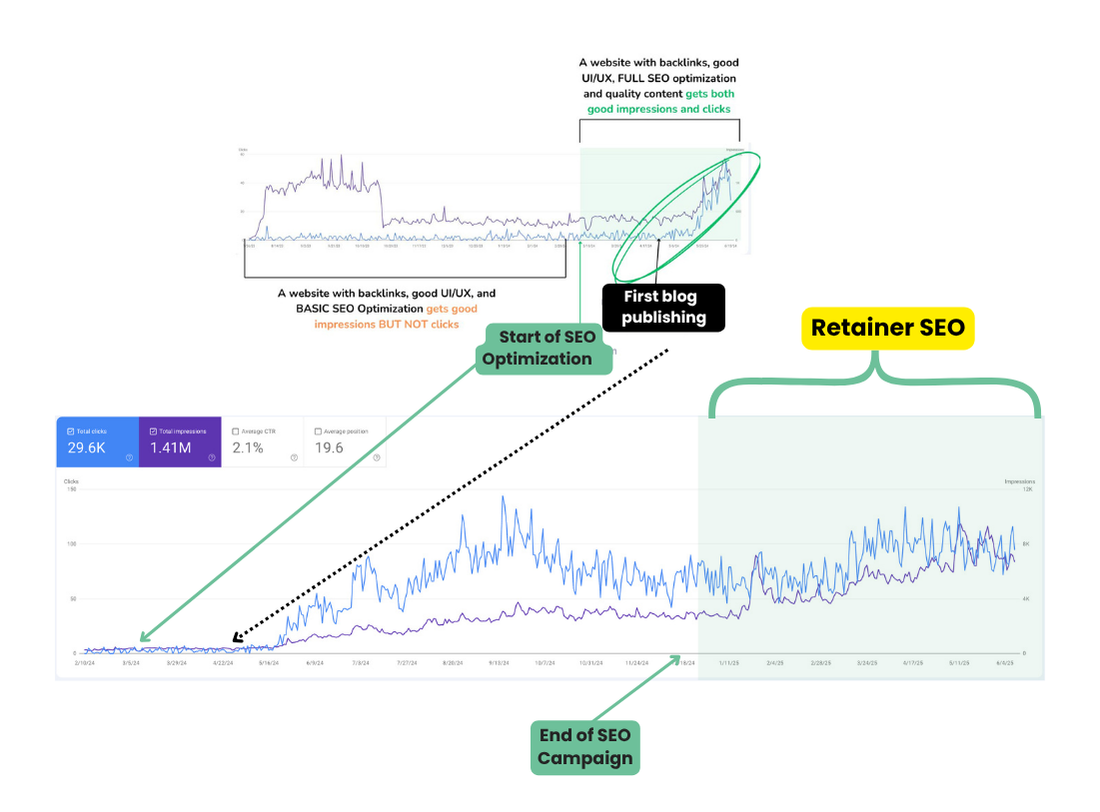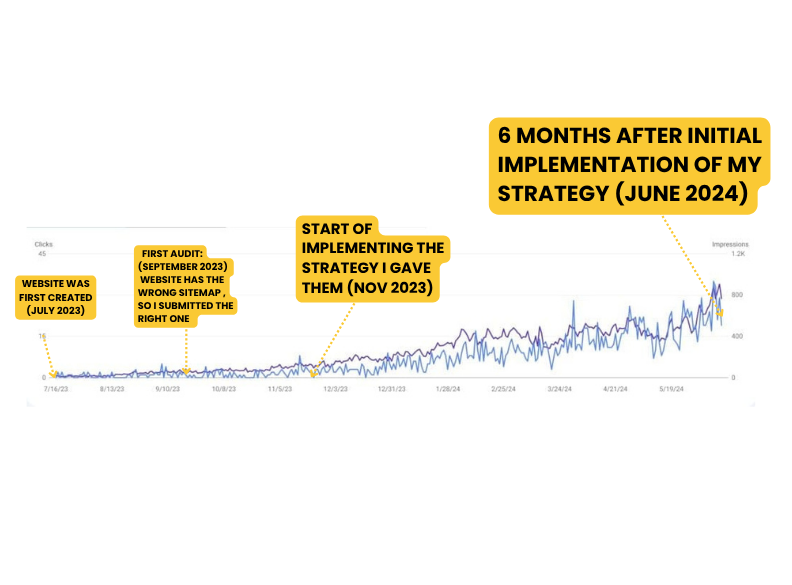Let’s together on your next project!
Check and learn from my SEO Case studies and Audits below!
2 Years Before Getting The Right Traffic
This therapist website was created last 2022 and it was only after the 6 months SEO campaign that I customized for them that they started to rank and…
Typical result of 6 months of SEO Campaign for a new website
A new website (created less than a year) is considered harder to rank than aged websites. So if you …
Getting Visible After 4 Years
This therapist site gained visibility after our SEO campaign and sustained momentum by consistently …
You can rank without blogs.
This WordPress website was a private therapy group that opted to not create blogs. I would usually r…
Long Tail Keywords in SEO: An Elderly Care Website’s Success
I’ve always been a fan of long tail keywords in SEO and my content strategy to help a domain g…
Blogging Benefits for Business: A Sample of Success
You might think that having a website is enough to attract visitors, especially if your SEO speciali…
“Do I need a sitemap?” Yes don’t skip it.
Have you recently created a website and has set it live? Did you know that you need to create a site…







